The Deep Litter Method
Keeping animals warm throughout the winter can be tricky when there is snow and wind, and cold day after day. Learning how to use the Deep Litter method is a great way to help to keep your animals warm in those frigid temperatures. Not only is it super effective, but it will save you time cutting back on some of those wintertime homesteading chores. When learning how to raise dairy goats, keeping them healthy is the easiest way to ensure your herd is strong. And healthy all starts with a warm, safe shelter.
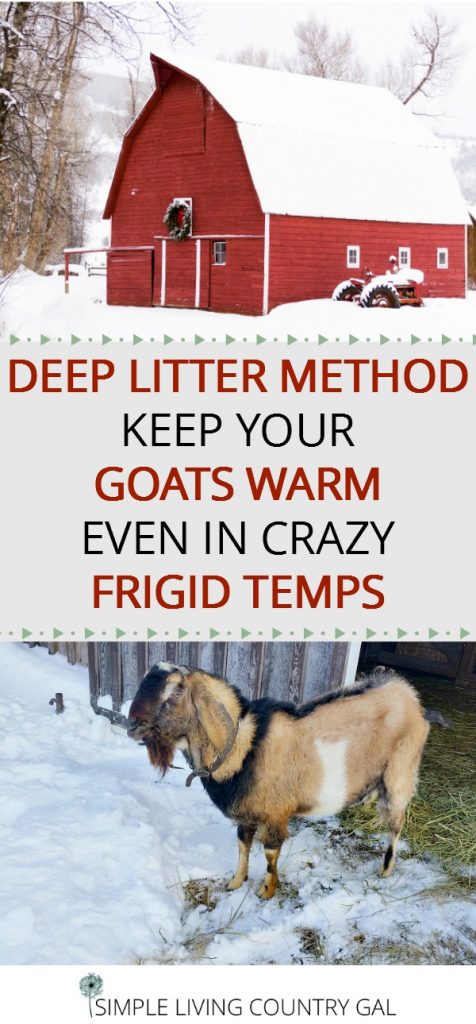
I’m not going to lie; in the winter, it gets pretty cold in Northwestern Pennsylvania.
So cold, in fact, that it can be downright miserable for my animals. Because of this, I am always looking for ways to keep them warm when the temperatures get brutal. If you are just starting out, you can read my post How to Keep your Animals Comfortable in Frigid Temps. There you will find other ways to keep all of your animals a bit more comfortable.
The Deep Litter Method: How to Keep Your Animals Warmer in Winter
One surprising thing I did find out over those first few winters is that even though the air is cold, it is the ground where the cold really gets intense. My barn is half dirt and half concrete and that means that when the wind chills are in the negatives, there really isn’t much difference in temperatures between the two.
Both grounds are rock hard and both floors are ice cold. Let’s just say if it looks cold from inside your home…you can only imagine how cold it is outside in your barn, chicken coop, or goat shelter.
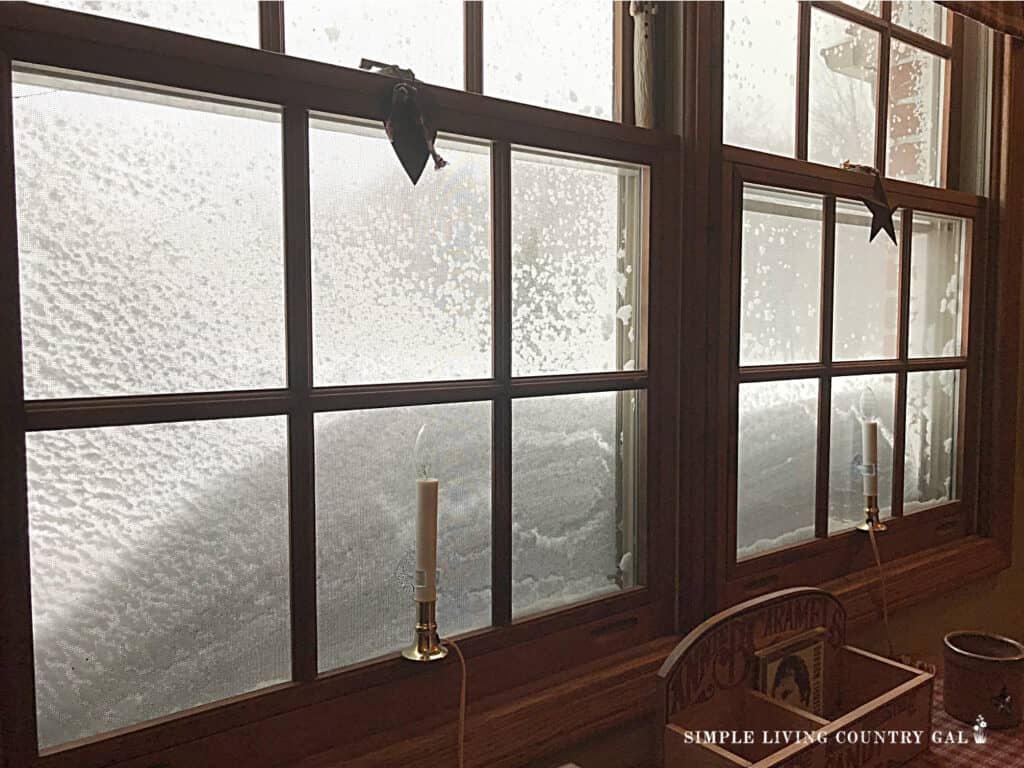
That first winter, I remember going out to feed my animals in the morning. I discovered all of my goats standing in a bunch, all huddled together with their tales tucked tight. I realized the ground was so cold they could not even lie down. And because of that, they were forced to sleep standing all night long.
Yes, it was time to come up with a new plan.
A few years ago, a friend and fellow goat owner herself told me about the deep litter method. I had never heard of it before, but after talking to her, I knew this was the solution I was looking for.
What is the deep litter method?
The deep litter method is a way of using bedding to insulate your animals from the cold ground. How it works is you start out with a fresh layer of bedding of your choice. You can use straw, sawdust, or wood chips. As the animals soil things up, rather than clean out the bedding, you will instead add a fresh layer on top every week or so.
Throughout the winter, the added layers of bedding will work to create a nice barrier between your animals and the cold ground.
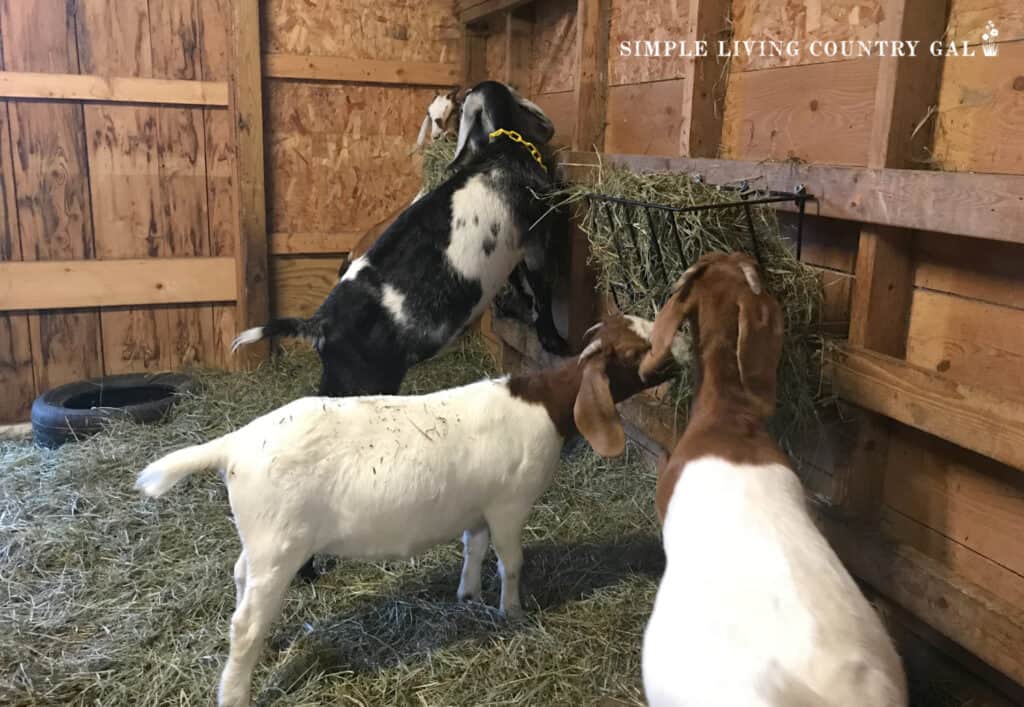
The deep litter method does two things. First, it saves you from doing the tedious chore of cleaning pens in miserable weather. Second, it provides a nice soft bed for your animals.
How to use the deep litter method to keep your animals warm.
Remember, our goal with any of our animals is to keep them safe, warm, and dry. By keeping this goal at the forefront you will go a long way to a healthy and happy herd year-round.
Step #1 Start with a clean pen.
It is important to remove all the soiled litter before you begin. This will keep the smell down throughout the winter. A nice thorough cleanout each fall will ensure that you are starting with a fresh and clean space in your shelter.
Read: How to Prepare Your Barn for Winter.
If you use a dirt floor in your shelter, you will need to remove the top layer of soil. Even though it looks like soil, it is actually compacted manure and urine. Using a shovel, dig down until you hit the soil to ensure you have removed all of the soiled layers.
Step #2 Put down a fresh layer of bedding.
Once the area is cleaned you can put down fresh bedding. I like to use sawdust in the fall. This helps to dry things out quickly and smells pretty nice too.
SLCG Pro Tip: We also like to sprinkle food-grade Diatomaceous Earth before we put our sawdust down. This helps to keep pests down naturally and away from your goats and other animals. Be sure to use food grade.
Step #3 Add more bedding as you go.
Every week or so as the weather continues to get cold, you can add more bedding to the top of the old. This helps to keep the smell down while also keeping your animal’s lungs free from ammonia. It is good to know that a goat’s lungs are quite delicate, and the ammonia created from their urine can be toxic to breathe in. By adding fresh bedding over the old, you will keep the smell down and your goats will do just fine.
SLCG PRO TIP: Goats tend to drop quite a bit of hay while eating. You can use this as a litter addition as well. Either leave it where it is or rake it around when you are upkeeping your shelter.
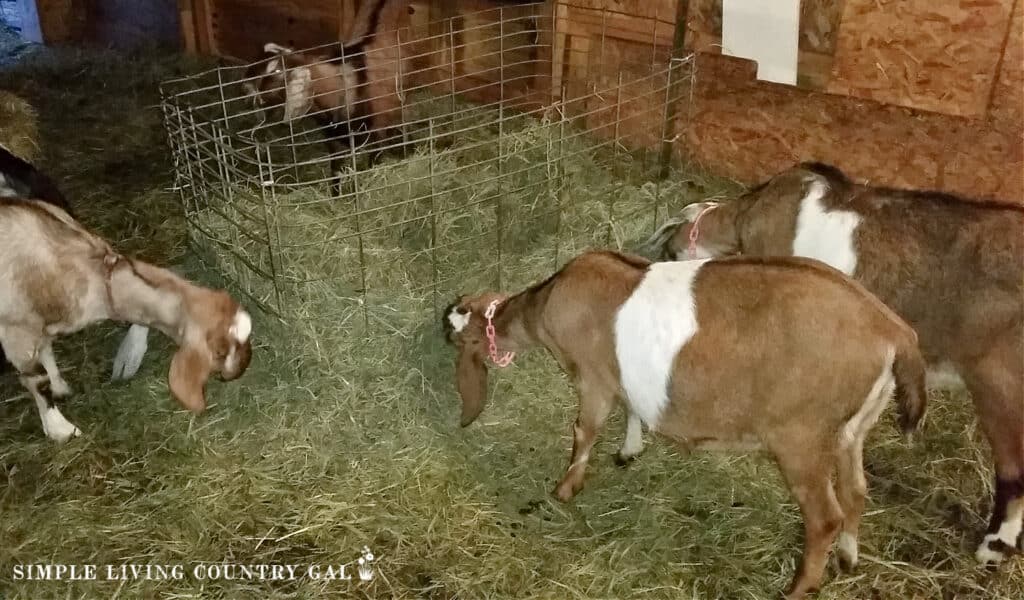
It is important to remember that whatever you add now and throughout the winter season will need to be removed later. Try to keep bedding additions to a minimum adding enough to keep the smell down and create a warm area without overdoing it.
Step #4 Spot clean.
I like to spot clean up any heavily soiled areas throughout the winter. This is especially helpful if you have quite a few goats in your barn. Things can go south pretty quickly and doing a few shovels out of nasty areas will help to keep things from getting too out of hand.
Also, goat’s manure will freeze into clumps that are like small rocks during winter and can, not only trip up you but your goats as well. By removing some of those heavily soiled areas as they come up you help to keep those hazards to a minimum.
For me, spot cleaning is just a part of my morning routine. I like to use a manure rake like this one and a good sturdy wheelbarrow. As my goats are eating, I can easily go in any heavily soiled areas each morning in just a few minutes time. I can also take a look at where I need to add a bit of bedding to keep things dry and comfortable for the entire herd.
Step #5 Keep the gate clean.
I learned early on that using the deep litter method where you enter your pen is not the best idea. Remember, not removing litter means you will have a good foot of bedding by spring. And for our shelter, that meant it was impossible to open the door that leads into our goat’s main area. We now keep things cleaned out at the entrance, so we no longer have any issues with the door.
Just something to keep in mind if your setup is similar to ours.
Deep Litter Method – What to Watch For
It’s true that using the deep litter method to keep animals warm is a great way to ensure a healthier herd, but there are a few things to remember.
#1. Be prepared come spring for a heavy cleanout job.
The more you add in, the more you will need to take out. At first, this was a deterrent for me, but I soon realized the benefits were worth it. Even though you will have more bedding to remove in the spring, I still feel the time saved in the winter and the help provided to my herd is worth the trade-off.
The good news is, that the removed bedding will be perfect for your garden. Add what you take out to your compost pile so it can start to break down before you add it to your garden.
#2. The smell is pretty intense.
When cleaning things in the spring, as you go deeper you will be hit with an odor that is hard to describe. I highly suggest you wear a face covering to protect your lungs.
Let me just stop here and say if you are older like I am, having a good wheelbarrow is essential to keeping back pain to a minimum. I received this wheelbarrow for Valentine’s Day from my Hubby 8 years ago, and it is the best thing he has ever gotten me. The two wheels make it easy to move no matter how full I fill it up. Invest in a good one, and your back will thank you for it.
If you have chickens, you can give them some manure or just let them in your compost area. They are pretty amazing and efficient workers and can break down a large pile of waste in less than an afternoon. We will even put a few piles in our garden and allow our chickens to spread them out for us.
Once they break down the solid pieces, we can just go in and rake things out, saving us a bit of work and time.
If you do not have chickens, then you can use a tiller to work the soiled bedding into the ground. Once tilled, I like to let it sit and rest. In another few weeks, it can be cultivated one more time, and then you should be ready to plant.
A rototiller is another homesteading tool you will want to research before purchasing. I have a lightweight option that allows me to use it without asking for help.
SLCG Pro Tip: If you are on a tight budget, you can rent a tiller for projects as you need one. For just a small amount, you can get your hands on one for the entire day and do all of your projects in one go.
Since I have begun adding soiled bedding from my barn to my garden area, my garden has thrived. It’s pretty amazing when you think about it. Free all-natural fertilizer just waiting to be used.
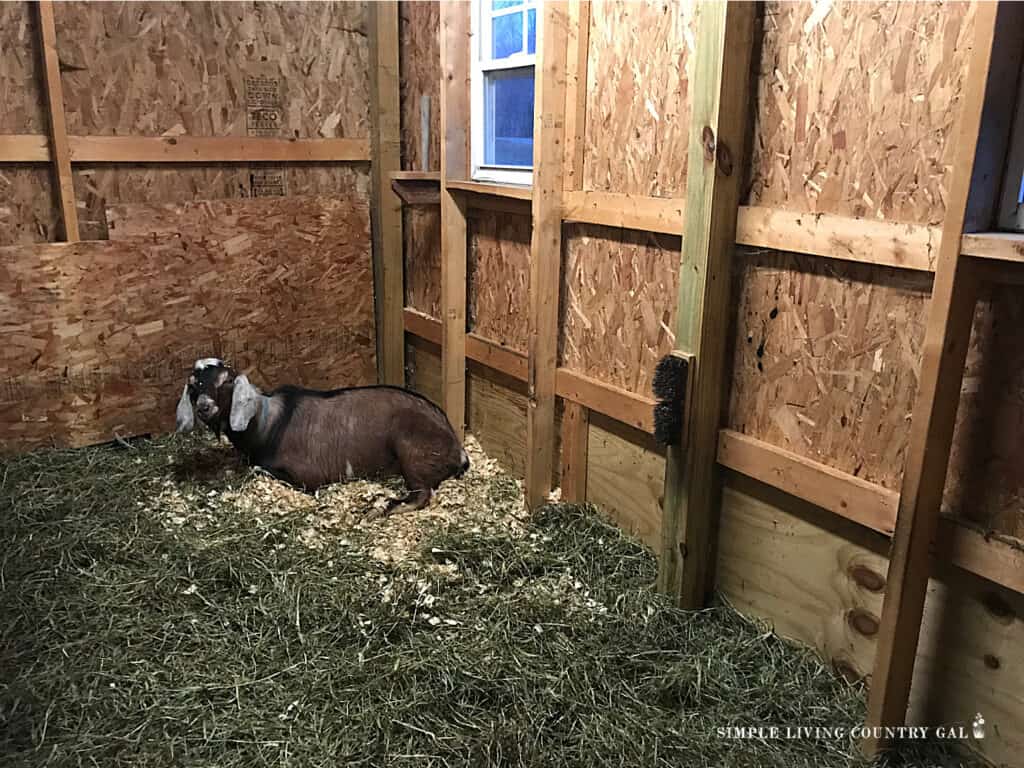
Deep litter is not exclusive to goats, this little trick works well with chickens, sheep, horses, and other livestock.
My favorite part of homesteading is learning to reuse and recycle as much as possible. The deep litter method will not only keep your animals comfortable in the frigid and, sometimes, dangerously cold winter temperatures, but it will also ensure an organic start to your garden.
If you are new to goats, you can find all my posts at Raising Goats: A Beginner’s Guide for everything you need to get started.
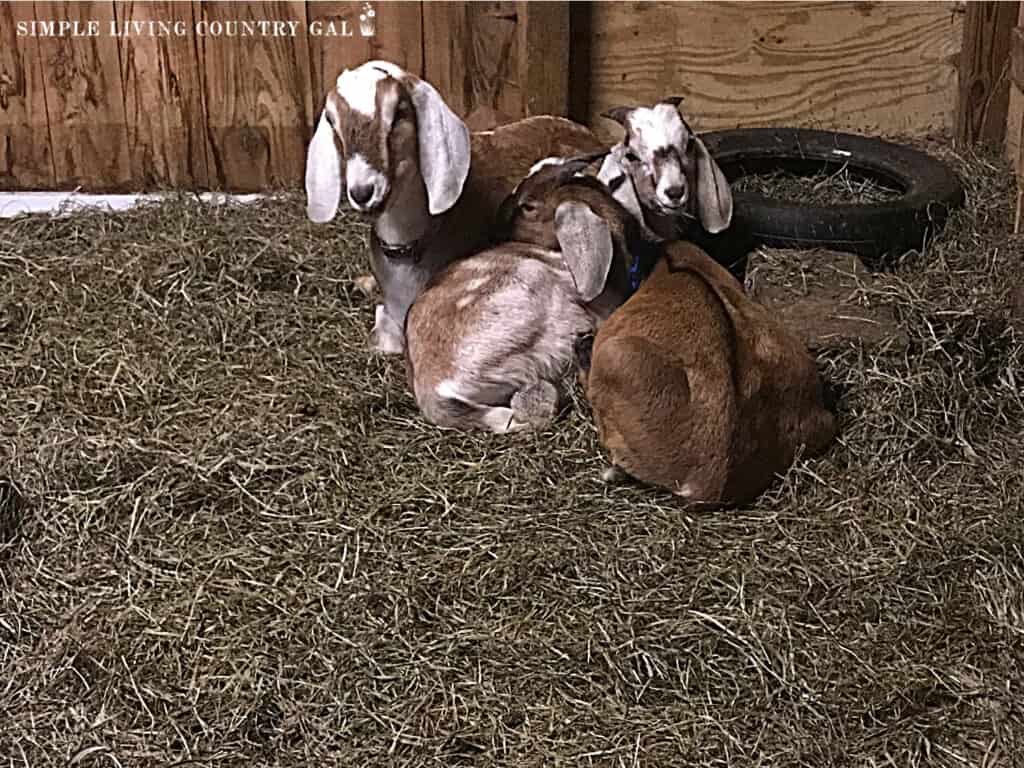
Helping your goats keep warm in the cold winter by using the deep litter method is something to give a try this season. Do what you can to promote a healthy herd rather than hurry and stress about treating sick animals later on.

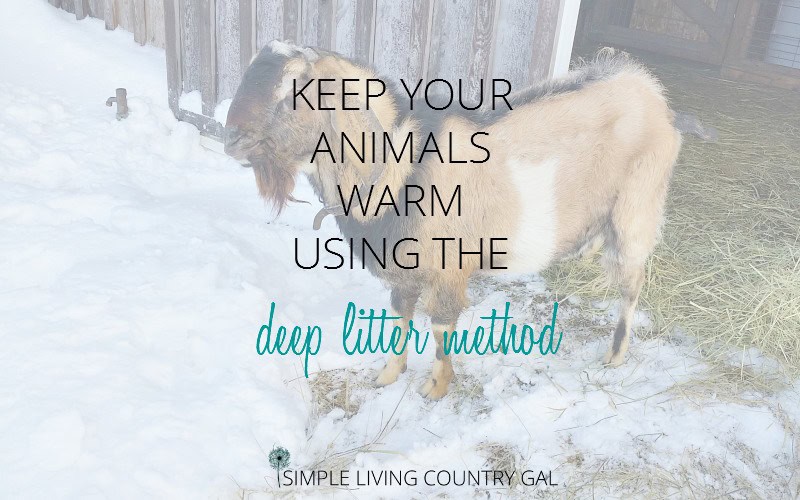
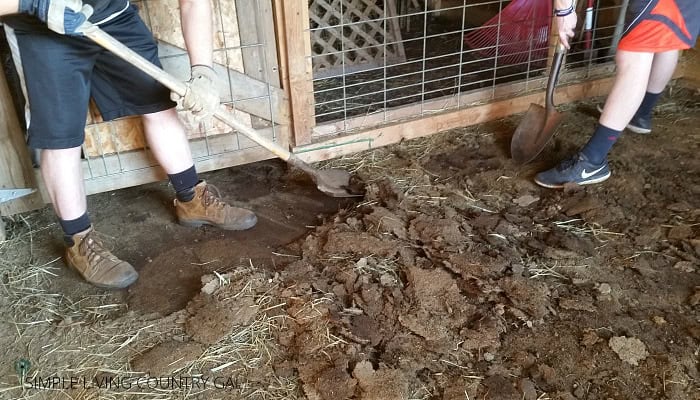
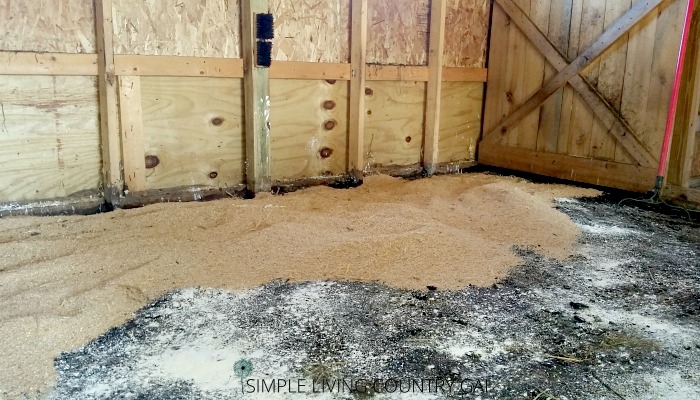
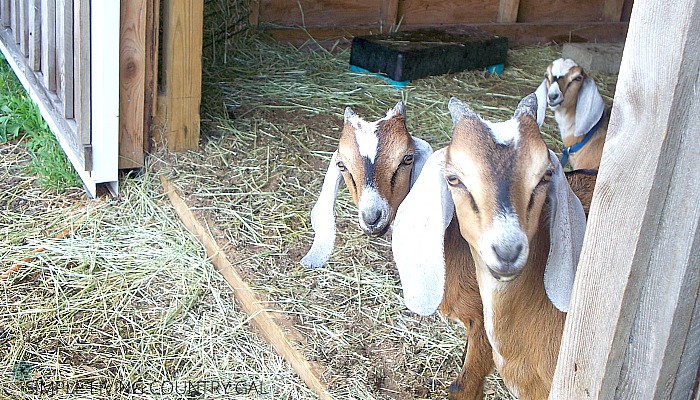
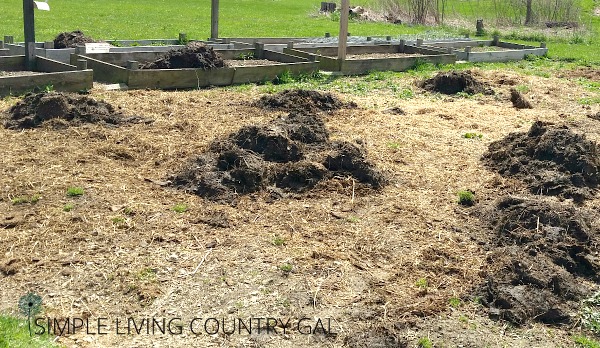
Hey Tracy Lynn! I love this post, and the DLM! We use it in our chicken coop every winter! You’re totally right, it is a lot of effort to get it out to the garden in the spring, but it’s so worth! Thanks for visiting my blog! I subscribed to yours, and hope to see you on Pinterest!
Yes, haha…it is a LOT of work in the spring. I will be thinking of you come March when we are doing out big shovel out! 🙂 Yes, I will see you on Pinterest!
Tracy Lynn
Can I do this with 3 sheep that sleep on a concrete pad with horse mats on it in a shed? Right now I have a thibk layer of hay in there.
I have done this with my rabbits but in that case, there was sooo beneath them.
Yes, you can, but it will be hard to clean out come spring with the mat there. If you can remove the mat that would be ideal.
Tracy Lynn
I have a couple of boards screwed inside to the bottom of my door opening. When it’s time to remove the litter, it’s a quick unscrewing. I just push the litter out the coop door right onto a tarp. It only takes 2-3 trips, and it’s done!
Hi Joy,
Oh my goodness, that is brilliant!
Thanks for sharing,
Tracy Lynn
Great information!! So very true too!! We have chickens and I agree with you!! Winters are long here in Mivhigan. Thanks for the post!!!
Stay warm, Angela!
The litter not only insulates the ground, the decaying actually produces heat. I have used it for my chickens.
Yes, Mollie,
You are absolutely right, it does produce heat. Don’t you just love that?! Another way to get that poo working for us!
We somewhat accidently started using this method our first winter with our goats. I had read about it with chickens but with the hay waste the goats created by spring when they were kidding we noticed how soft and warm their stalls were (of course after weeks of warm and sun the kids came in a snow storm and single digits….in May) Now that I am intentional about it it takes a lot of stress off the chore of mucking for them all winter….also, we harness train our wethers so they do the work of moving it to the garden in the spring
Oh, yes, winter mucking is the worst!!
I am looking into this deep litter method for winter here in Michigan. Won’t the smell make them sick? Do you just throw more straw down once it gets a little wet?
Hello, Andrea!
As long as you have sufficient ventilation you will be fine. Now if you are in there and notice the smell is bad you can do a few things to help. Toss down some wood shavings or sawdust. That will help soak up the excess urine. Sprinkle some food grade Diatomaceous Earth. Straw will only help to create a barrier between between the damp ground and the animals which is good, but it will not “soak” up the urine like sawdust or wood shavings will. I live in Northern Pennsylvania and our winters, not as bad as yours, do get pretty bad. Since my animals are on a dirt ground this really does help to insulate them from the cold better.
I hope this helps!
Tracy Lynn
Will this work if your shelter is on a platform with a wood floor covered with one large match? Or should I put a deep layer of DE on first and then shavings?
Dana,
Yes, I would put the DE on especially if you are concerned with parasites in the pen.
Tracy Lynn
YOu can go one better and deep litter permanently by making your chickens scratch the deep litter in the goat barns all of the time. They spread and mix the manure this way. This means you won’t gave to turn the deep litter so much. It also keeps deseases at bay, as the microbial life eat any parasites or nasty bacteria.
I plan to put a Huggle culture log pile underneath the deep litter which will keep it aireated and balance the moisture levels. That way I won’t gave to do a massive clear-out. It can stay there all year round, unless I want some compost.
This is a great idea, but unfortunately, with 30+ chickens, they would make more mess than help I’m afraid. For smaller flocks however, this is a great idea!
How do you manage parasite with this method? Most parasites like the Barber Pole live in the feces of goats. Would this give the worms a great place to hatch and infect your goats?
If your goats routinely eat hay that has fallen to the ground and you already know you have barber pole worms in your herd, then this might be an issue. We use hay feeders that really help to deter hay waste and although there is a chance of worms with any herd we use herbs weekly to deter worms from happening in the first place.
I have found that by really working to promote the health of my heard they are better able to fight off any worms that they may happen to come into contact with.
I hope this helps!
Tracy Lynn
What herbs are you using for worms?
I have two herbal wormers that I like to use.
Molly’s herbals (Fiasco Farms) and Land of Havilah herbals. I find both works quite well keeping my goats from getting overloaded with worms.
These are just used to keep worms at bay and not to treat a worming issue. If your goats have worms, please seek veterinarian advice for more location-specific help. Now all medical wormers work for all areas, so make that call and ask for advice. 🙂
Good Luck
Tracy Lynn
You talk about feeding herbs to your goats. What herbs, how and why? Thank you for all the information. We have learned a lot from your posts.
Hello, Mary!
The main herbs I feed my goats is Fennel to help with milk production and worming herbs that I purchased from a trained and licensed goat owner. 🙂
Tracy Lynn
Love your site, very informative, an actual Blessing! My goats are kept in a tractor shed that’s not all air tight but built tin, so my worry is keeping the goats warm & three are ready at any moment to first time kid! So I’ve been sitting how to keep them warm and safe. I’m in my sixty’s and raised city and had country parents! So it’s just Me when it comes to my goats to figure things out, my old man methods is their make it on their own! That’s not my way and I’m watching out hot my Babies to be well taken care of! The barn does have vent so I’m aiming for the warmest safest places in it! Your info helps a lot and gives me ideas. Thanks for your help. And on the dewormers in the beddings! I’ve dewormed vaccinated them and ibomaec like we do our cattle! My biggest question is can they have a distemper shot or treatment like dogs & cattle? My bull goat is herding with them right now so I guess I should place him somewhere else to give them rest and have their kids. Stay warm – Happy Holidays
Hello Liza,
You sound alot like me….when it comes to the goats, I am in our household. 🙂
If you are concerned about the warmth in the shelter, you can add in a few straw bales (so the goats do not eat them) sideways in the corners. This will give them a nice warm spot to go once they are born. You can also dry them off with towels letting mom clean them off as much as possible with you so she can bond with them. Offer your goats a little warm water with molasses in it to encourage them to drink.
As far as meds, that will all depend on where you live and what issues you are dealing with. We only vaccinated CD&T here, nothing more than that. Please call your local vet on the other meds and if they are needed.
Good luck!
Tracy Lynn